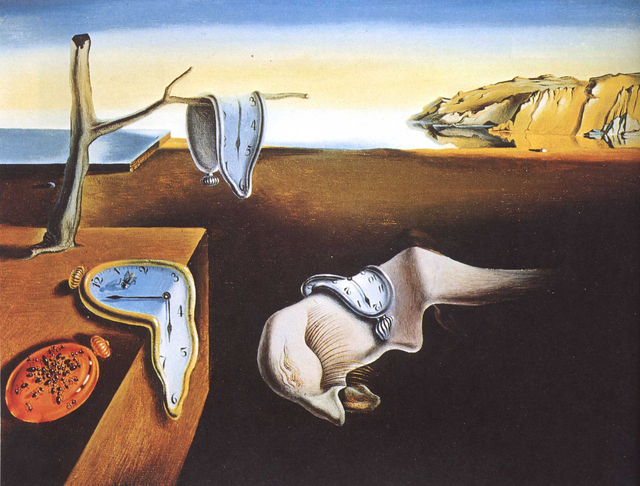About a tablet with two OSes and a new smartphone HTC, 32 MP front cameras and Japanese vending machines for selfies, the sad fate of the company that created YotaPhone, and the fear of forgetting oneself …
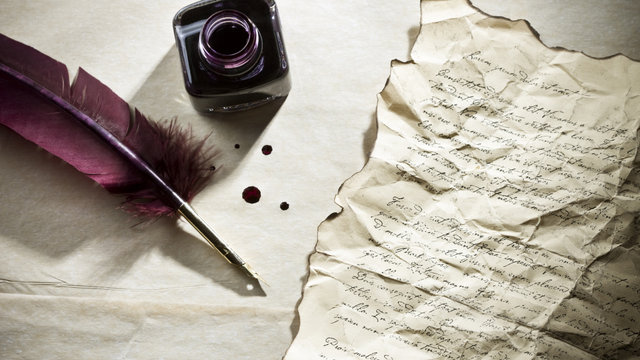
The other day the company HTC officially presented its new smartphone called HTC One A9. The first glance at this device has already been released on the MR, and on the AMR – an additional note about the camera's features. Both articles were written by Artem Lutfullin.
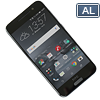 |
HTC One A9. First glance |
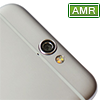 |
Camera HTC One A9 |
Just in case, let me remind you of the characteristics of the smartphone:
- Class: company flagship
- Form factor: candy bar
- Body Materials: Aviation Aluminum, Plastic, Glass
- Operating system: Android 6.0 Marshmallow, HTC Sense 7.0
- Network: GSM / EDGE, WCDMA, LTE Cat 6 (nanoSIM)
- Platform: Qualcomm Snapdragon 617 (MSM8952)
- Processor: Quad-core 1.5 GHz (Cortex-A53) and Quad-core 1.2 GHz (Cortex-A53)
- RAM: 2 GB
- Memory for data storage: 16 GB, slot for memory card microSD (128 GB cards are supported)
- Interfaces: Wi-Fi (a / b / g / n / n / ac), Bluetooth 4.1 (A2DP, aptX, LE), microUSB connector (USB 2.0, USB-OTG) for charge / synchronization, 3.5 mm headset, HDMI (via microUSB), DLNA, NFC
- Screen: AMOLED, 5 '', 1920 × 1080 pixels (FullHD), ppi 441, automatic backlight adjustment, Gorilla Glass 4 with 2.5D technology
- Main camera: 13 MP, f / 2.0, BSI, optical image stabilization (OIS), dual LED flash of different tones (works as a flashlight)
- Front camera: 4 MP (UltraPixel technology), f / 2.0, BSI, wide-angle (no autofocus), video recording at 1080p
- Navigation: GPS / Glonass (support A-GPS)
- Sensors: accelerometer, position sensor, light sensor, gyroscope, barometer
- Battery: non-removable, Li-Pol, 2150 mAh
- Optional: fingerprint scanner, fast charging (Quick Charge 2.0)
- Dimensions: 145.7 x 70.8 x 7.3 mm
- Weight: 143 grams
Artem writes that in HTC they decided to follow the path Apple, focusing on the general impression of the device, and not on any specific characteristics. And I would really like to believe that the 'path Apple' can be traced not only in the appearance of the apparatus, but also in something else. But, looking at the photos of a smartphone, for some reason it just doesn't work to truly believe.
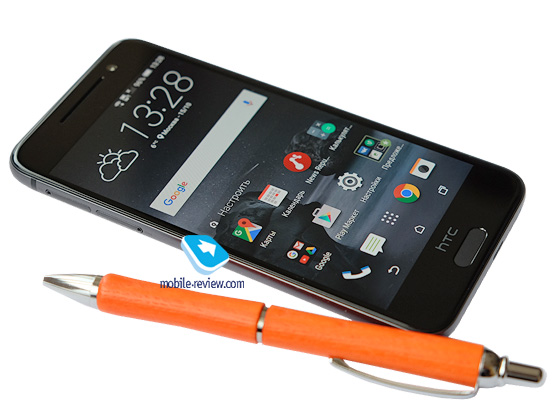
Let's be honest – most users really don't care what their device actually has. They just need to believe that he is the best. So, the trouble with HTC One A9 is that while it does not inspire this confidence. I don’t know, maybe everything will really change, it’s worth picking up the device. But so far there are associations with a copy, which cannot be better than the original, and a whole heap of other people's ideas, pulled from different companies simply out of despair. In recent years, HTC has not been doing very well, and such an outspoken imitation of competitors is inevitably perceived as proof that the company no longer believes in its own strength.

I can believe this is actually a great machine. And even admit that in reality it is a cut above the products Apple, Samsung and Meizu, from which HTC they obviously took a couple of ideas. I'm just afraid that the sales of a smartphone will be more influenced by what they think of it, and not what it really is. The situation could be corrected by the price, but it just spoils everything even more.
Fans of the brand (to which I still include myself) may say that this is dishonest and unfair. After all, the same Samsung or Meizu is getting away with it for a year, the external similarity with other devices does not affect the sales of their devices. But HTC shouldn't be blamed for the 'apple' design, it's more likely that Apple 'spied' on the design of last year's HTC One than vice versa. What can I say. This is probably really unfair. But life in general is a complicated thing, and it has nothing to do with our ideas about beauty.
Link to news
HTC is far from the only company whose future is now very dim. In the world of mobile technology, something is constantly happening and something is changing, and even behind long-known names, something completely different may lie in wait for us. So, the Yota Devices company, known in the world primarily as a manufacturer of Russian YotaPhone smartphones with an additional E-ink screen, may soon become completely Chinese.
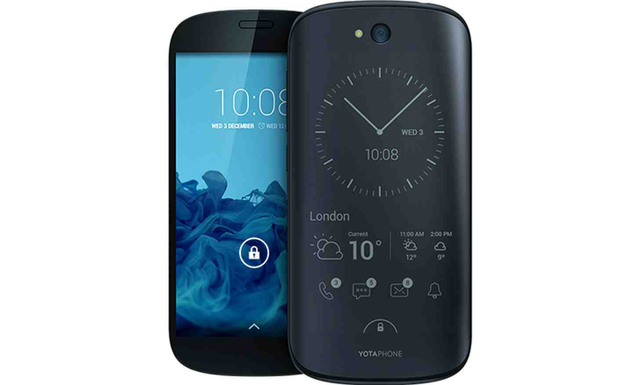
Recently it became known that the Chinese holding company REX Global Entertainment has acquired a controlling stake in Yota Devices, and under the terms of the agreement, it can buy out the remaining 31.1% of shares from Rostec and top managers of Yota Devices.
I will not undertake to comment on this news, but something tells me that the YotaPhone will soon cease to be a 'Russian smartphone'.
Link to news
Meanwhile, the entire mobile world is watching with interest the new Windows Phone (Mobile). True, so far this interest is rather sluggish, but nevertheless, many companies that have already burned themselves at WP7 or WP8 once are beginning to think about giving the brainchild Microsoft another chance. Considering that at the moment they clearly know about this OS more than you and me, this cannot but be encouraging.
Confused only by one thing – too many manufacturers are beginning to prepare their way to retreat in advance. Maybe they just reinsure themselves, or maybe they don't really believe in the success of WP10 from the beginning, but they don't just want to give up this niche to their competitors.
A typical example here is Alcatel. If you believe the information Evleaks (and there was no reason to doubt the leaks it published yet), this company is preparing two versions of its new OneTouch Fierce XL smartphone at once. One of them will work on the new one Windows, and the other on everything familiar Android.
Alcatel OneTouch Fierce XL for Windows (left) and Android (right). Both destined for T-Mobile USA. pic.twitter.com/bhHOIYiC2L
– Evan Blass (@evleaks) October 17, 2015
In terms of hardware, both versions will be identical, in fact, they are one and the same smartphone. I think that if one of the versions of OneTouch Fierce XL is not in demand, Alcatel will switch to the production of another without any problems.
According to rumors, the characteristics of the device are as follows:
- 5.5-inch HD screen
- Quad-core processor Qualcomm Snapdragon 210
- 2 GB of RAM,
- 16 GB internal memory
- Battery 2 500 mAh
The expected sales start date is December of this year, that is, immediately after the official release of the mobile version Windows 10.
Link to news
The Chinese company Teclast decided to go the other way. Her new tablet X98 Air III will receive two operating systems at once – both Android and Windows 10.
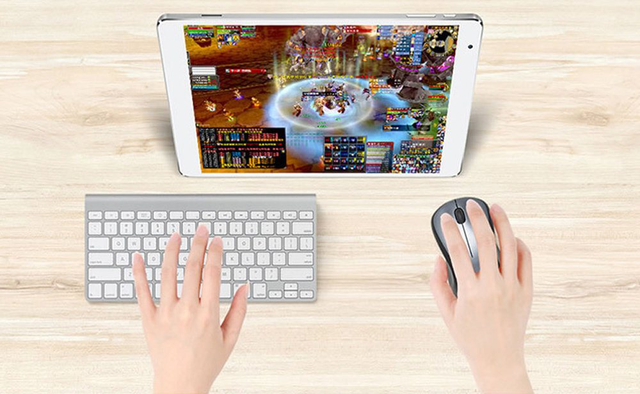
The characteristics of this device are as follows:
- 9.7-inch IPS display with 2018×1536 resolution and 4: 3 aspect ratio
- Quad core 64 bit processor Intel Z3735F @ 1.83 GHz
- 7th Generation Integrated Graphics Accelerator Intel HD Graphic
- 2 GB of RAM
- 64 GB internal memory, microSD card slot
- Battery 8000 mAh
Link to news
Mobile devices with several different operating systems are my old dream. Technically similar devices exist now (take at least the same HTC HD2, on which you can install a bunch of different systems), and many companies continue to work in this direction further. Suffice it to recall at least the abundance of patents for devices with dual boot or the ability to quickly change the OS, which have already been mentioned more than once in previous issues of the digest. And, nevertheless, the bright future of this idea is hard to believe.
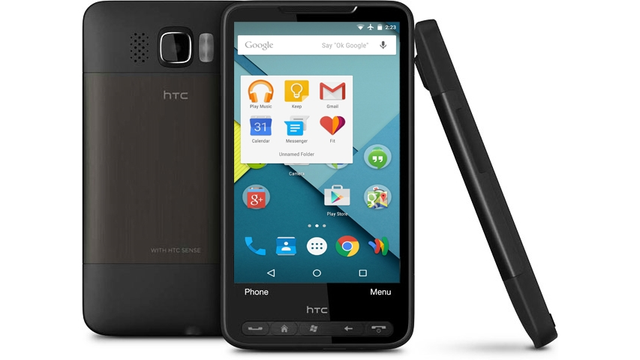
First, the buyer usually does not care about the operating system as such. He is interested in the device as a whole. All these reflections on the topic 'what would happen if Samsung released a Galaxy Note on iOS' or 'what would be iPhone, work on Android' are interesting only 'geeks'. And not all, but only the most stubborn. For everyone else, iPhone is iPhone, and Galaxy Note is Galaxy Note.
Secondly, each manufacturer tries to endow their device with a number of unique 'chips' that will not be so easy to port to another OS. The same Microsoft looks at customization issues in a completely different way from Google. This means that half of the advertised unique features of the device in one of the OS will be unavailable. Do not forget about the issues of device optimization, its stability and the release of updates. Here it is problematic to cope with one OS, let alone parallel work with two or three.
Thirdly, switching between different operating systems is a very dubious occupation in itself. Although the number of cross-platform applications continues to grow steadily, the set of software on different operating systems will inevitably differ. And it will not be possible to synchronize data always and everywhere. As a result, the user will work in one system anyway, so what's the point for a company to spend a lot of effort on the second one too? And isn't it easier to release different versions of smartphones on different OSs, allowing everyone to buy what is closer to him?
On the other hand, on a tablet, unlike a phone, it makes at least some sense. For example, most of the time you can work in Android, but if it happens that familiar Windows applications are urgently needed, and there is no laptop or PC at hand, then you can switch to WP. But somehow this is all very spherical and in a vacuum, I think that in practice few people will need such difficulties.
As for me, I would, of course, be delighted with the opportunity to try out a bunch of different OSs on one device, but that's just far from the needs of the average buyer.
On the question of customer needs. The processor is not only valuable fur the number of cores and clock speed, this is also a list of hardware-supported functions and different capabilities. Which for this very buyer can be much clearer and more interesting. It is no coincidence that the company MediaTek is trying to advertise its new Helio X20 processor not just as an extremely powerful ten-core processor (four 1.4 GHz Cortex-A53, four 2.0 GHz Cortex-A53 and two 2.5 GHz Cortex-A72 ), but also as a solution with a number of unique features.
32MP camera on a phone. There’s a great big world to capture. Or take a #selfie http://t.co/f2Rcd41fSe pic.twitter.com/arrRVxuasA
– MediaTek (@ MediaTek) October 19, 2015
For example, recently it became known that it is thanks to this processor that smartphones will learn to take 32 MP selfies. And it may well be that waiting for this 'miracle' is not too long – the first devices based on Helio X20 may come out at the end of this year.
Link to news
If we talk about technology (especially mobile), then Japan is a separate world, periodically somewhat reminiscent of the looking glass. Sometimes you look at many original Japanese devices just with your mouth open, even though they usually don't go to foreign markets.
The selfie epidemic has not passed Japan (however, it is still a big question where exactly it began), but ordinary smartphones were not enough for the Japanese. Now even vending machines selling drinks will learn how to take selfies in the Land of the Rising Sun, and such a picture can be changed immediately and sent to a friend via the local messenger.
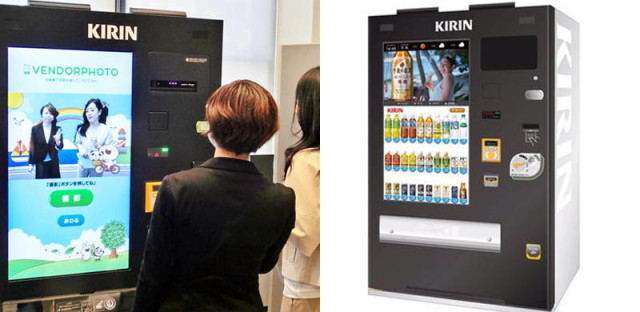
The developers of the 'selfie machine' believe that such a service will be very popular. And they were not even too lazy to translate the interface of the machine into several languages so that not only local residents, but also any tourists could use it.
Link to news
In general, selfies are a very curious phenomenon. Not so long ago, and no one knew such a word, the closest analogue was the term 'self-portrait', which came from painting. Then, when the selfie epidemic had just begun, it was believed that it was all about the fashion for smartphones with front cameras. Which, in fact, were originally conceived not at all for self-portraits, but for video calls. It seemed obvious that only a couple of years would pass, and the new toy would get bored, and the epidemic of self-portraits would end by itself. In the end, who needs several thousand practically identical shots, where, apart from your own face, you can't really see anything?
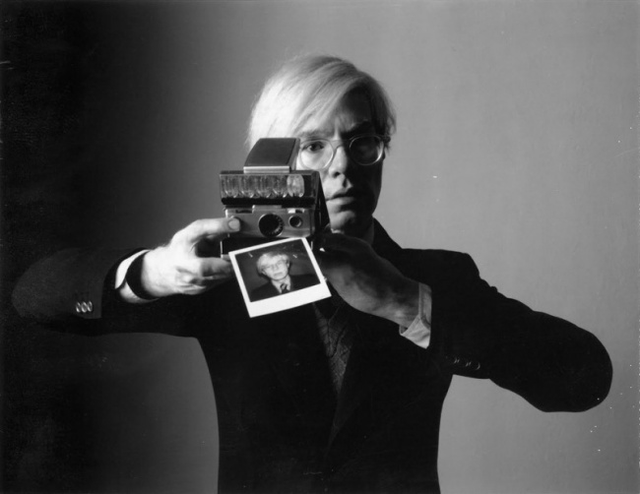
Andy Warhol, self-portrait, 1974
In practice, there is no need to talk about any selfie death. Moreover, such pictures have become as commonplace as social networks or chatting. Manufacturers produce special 'selfie phones' and sell selfie sticks with might and main, and many people take pictures of themselves several times a day. Of course, among the heap of selfies there are stunning shots of rare beauty, serious family photos, and shots that are extremely significant for the photographer himself. Basically, this is rubbish – people on the go take pictures of themselves against the background of everything and everyone, without even trying to take a good shot or at least spend an extra ten seconds choosing the right angle. Sometimes such frames gather dust on hard drives for years, and then go to the trash without looking, sometimes they are published on social networks.
Earlier, when social networks as such were not yet available, and LiveJournal was in vogue, people could write a short note about their vacation in Paris. After the 'boom' of social networks, this would no longer be a note, but a few short posts with a couple of photos: what hotel came across, what was the weather, where did they go for a walk on the first day. By that time, blogs had lost their former popularity, for many people their format turned out to be too complicated, but microblogs like the same Twitter went with a bang. Particularly stubborn comrades managed to write almost a hundred posts a day: 'I got on a plane', 'Their tomato juice is just excellent', 'France is super, I can't wait until we arrive', 'We are going to land, they ask turn off the phone 'and so on.
For many, selfies are the next step. Rather than describing the beauty of the Eiffel Tower or telling you that you decided to spend your vacation in France, you can simply post one single selfie. And everything is clear without any words. And the fact that the picture is blurry and the angle is unsuccessful is absolutely not important here, the fact itself is important.
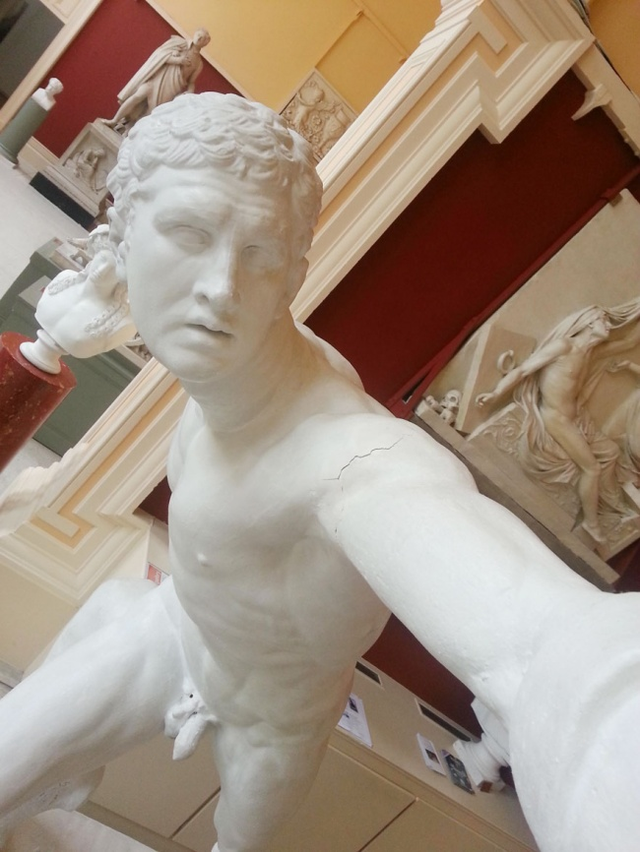
This is how we would see Ancient Rome, exist at that time a selfie
The goal of technological progress is to make life easier for people, to reduce the amount of manual labor. But sometimes it seems that together with the water we accidentally threw out the baby too – simplifications have affected all areas of our life, and this is not always and not always good. Why analyze information from different sources when you say 'Ok Google' and they will immediately give you a ready answer? Why think about what place in the film is worth laughing when they came up with offscreen laughter for this? Why try to describe your feelings to the interlocutor and convey the mood when you can just put a smiley? And why try to write something more or less coherent about the trip when you can just show your face against the backdrop of a local landmark?
Everything is good in moderation, otherwise any wonderful and useful idea will end in something completely different. But often you only understand this when it's too late to change something. And no matter how modern progressive humanity turns out to be in the role of a child who has reached a bag of sweets. Who ate sweets until he gained a couple of dozen extra pounds and finally ruined his stomach and teeth.
However, the popularity of social networks or the laziness of novice bloggers alone cannot explain the selfie epidemic. Most of these pictures will never be published on the Internet; people take them almost mechanically, automatically. Note that a couple of decades ago, no photographer would have thought of photographing himself from different angles. And not at all because of the cost of the film or the lack of a built-in mirror in the camera. After all, even a few years later, when digital soap boxes became available to everyone and everyone, there was no epidemic of self-portraits yet. People would rather ask others to take a picture of them against the background of their favorite attraction than to photograph themselves with an outstretched hand. As a last resort, they used a timer, for group family shots it was even convenient. Then it seemed completely logical, because this way the picture will turn out much better. So why do some nonsense and pretend to be an idiot?
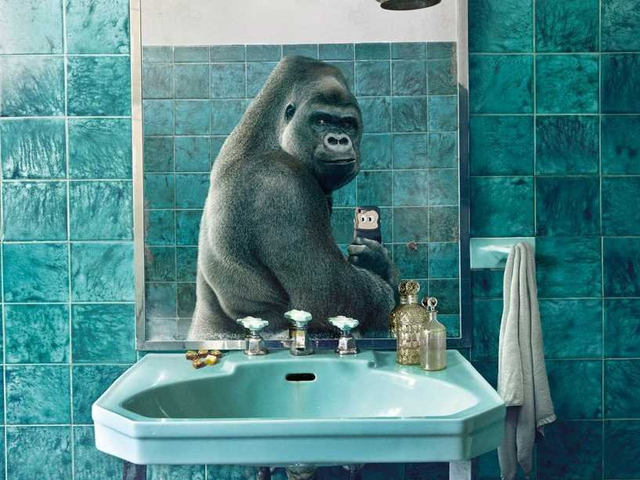
The quality of front-facing cameras on smartphones has changed since then, and most point-to-point cameras have gotten rotating screens. But still, a 'normal' photo will be much more advantageous than a shot of yourself 'hand-held'. Selfie sticks partially neutralized this problem, but do not forget that they are a consequence, not the reason for the popularity of this type of photography.
So what is the popularity of selfies? Why do many people take dozens or even hundreds of such pictures in one trip? Even realizing in advance that most of them will certainly never be published anywhere? Is it just because they like to see their own face from all possible angles?
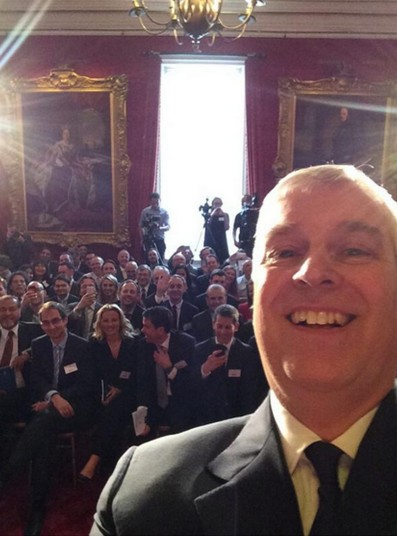
Prince Andrew, Duke of York. First official selfie of the British royal family
I'm afraid the answer is very simple. Although not very funny. In our age, people have lost the habit of relying on their memory, they need proof that they really had this amazing day. In the sea of information that falls on the head of every modern person every day, it is very difficult to preserve memories of what he saw and experienced, not to confuse it with a bunch of photographs, videos and stories of other people about the same place. Realizing that the joy of this amazing trip and the indescribable atmosphere of autumn Paris can be forgotten forever in a couple of weeks, people try to leave clues to themselves. Tie a knot for memory. And here it is really more important not just beautiful photos of the Eiffel Tower (there are hundreds of thousands of them on the Internet), but your own smiling face against the background of Paris. Was the picture blurry and not too pretty? Let. But maybe in a few years he will help relive this stunning evening, again feel the cold wind of Paris on your skin and remember the sounds of an incomprehensible, but such beautiful French speech. This is the key to your own memory and to yourself, and the key does not have to be beautiful at all.
The only problem is that no matter how convenient the crutch is and no matter how reliable the hearing aid is, anyone would prefer to walk and hear again without their help. And here we are not even talking about either one or the other – selfies are no more suitable as a substitute for their own memory than a paper megaphone for a deaf person or a thin reed for a lame one. And no 'selfie sticks', 'selfie phones' and 'selfie machines' will change that.
So it goes.
P. S. 'Persistence of Memory' (also known as 'Persistence of Memory' or 'Soft Hours') is one of the most famous paintings by the artist Salvador Dali. Since 1934, the painting has been housed in the Museum of Modern Art in New York, but anyone can look at its electronic reproduction even now. There she is:
